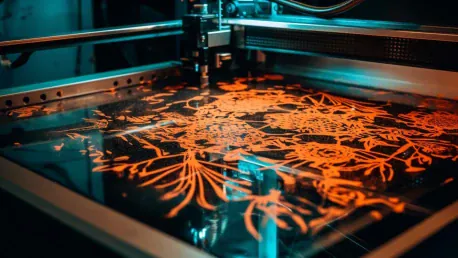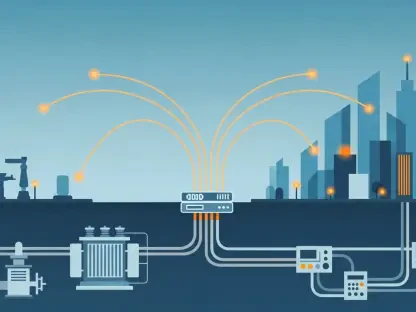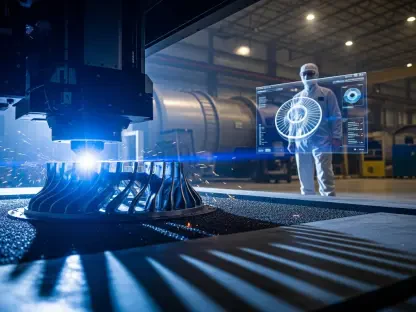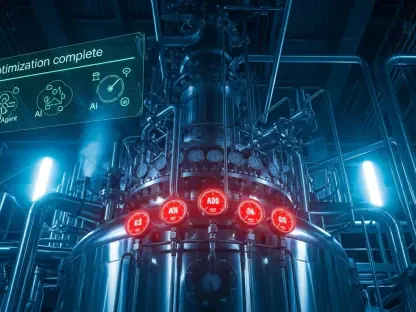Pershing, part of the prestigious Ferretti Group, has introduced the groundbreaking GTX116 yacht, showcasing a revolutionary step forward in luxury yacht production. This feat is achieved through the integration of advanced robotic additive manufacturing technology, highlighting the Ferretti Group’s unwavering commitment to innovation. By leveraging Large Format Additive Manufacturing (LFAM) and the Heron AM system from Caracol, the GTX116 sets a new benchmark in yacht manufacturing, underlining significant advancements in both efficiency and performance.
Pioneering Additive Manufacturing in Yachting
The transformation in yacht production is underscored by the use of LFAM technology in the GTX116, with Caracol’s Heron AM system fabricating essential superstructures like air grilles and the visor above the windshield. This utilization of 3D printing technology marks a new era in yacht manufacturing, combining aesthetically appealing designs with reduced weight, thereby enhancing the overall efficiency of the vessel. The Ferretti Group’s decision to integrate this advanced technology into their production processes is a testament to their pursuit of innovation and excellence in the luxury yachting industry.
By adopting 3D printing for crucial yacht components, the Ferretti Group has embraced a significant leap in production capabilities. This advanced technology offers unprecedented flexibility in design and execution, allowing for the creation of complex geometries that were previously challenging to produce. Beyond aesthetics, this integration promotes efficiency and optimization in manufacturing processes, as components can be printed directly from digital models, streamlining the traditionally labor-intensive production.
Enhancing Production Efficiency and Cost-Effectiveness
Traditional methods of constructing yacht components like air grilles involved manual lamination of fiberglass, requiring skilled labor, multiple molds for complex geometries, and extended production times—all contributing to significant costs. With the advent of large-format 3D printing used in the GTX116, these cumbersome steps are rendered obsolete. Eliminating the need for master molds and tooling, components can now be directly fabricated from digital models.
The simplification of the manufacturing process through large-format 3D printing not only reduces production times but also significantly cuts down on overall costs. The additive manufacturing approach accelerates design iterations and allows for rapid prototyping, leading to increased efficiency throughout every stage of production. This innovative method is more sustainable and less labor-intensive, thus transforming the production landscape of luxury yachts.
Introducing Lightweight and Durable Materials
A key advantage of the Heron AM technology lies in its ability to use lightweight yet highly durable materials, enhancing the performance of yacht components while minimizing material waste. For the GTX116, the air grilles were printed using ASA reinforced with 20% glass fiber (GF), chosen for its robustness and resistance to harsh marine environments. This material choice underscores a commitment to both durability and innovation in yacht construction.
The entire 3D printing process for these air grilles was completed in approximately 72 hours, marking a considerable reduction in lead time by 50%. Additionally, this method demonstrated a 60% reduction in material waste and a 15% decrease in the overall weight of the components. By significantly streamlining the production process, while also reducing the need for finishing operations, such as the application of a gel coat, this approach exemplifies a sustainable and efficient path forward.
Innovations in Yacht Design and Performance
The Pershing GTX116 is not only a marvel of engineering but also a testament to the potential of additive manufacturing to elevate yacht design and performance. Spanning 35 meters, the GTX116 showcases an innovative design aimed at enhancing the seafaring experience, blending sportiness with elegance. The use of Caracol’s Heron AM platform allows for the creation of intricate superstructures with complex geometries that are both functionally superior and visually striking.
By moving away from traditional manufacturing methods towards additive manufacturing, the GTX116 redefines possibilities in yacht design. This shift allows for new, more robust designs that meet modern expectations of luxury and performance. Caracol’s technology enhances performance capabilities while also optimizing weight distribution, leading to better overall vessel behavior at sea. This combination of efficiency, customization, and advanced aesthetics solidifies the GTX116 as an exemplary model in contemporary yacht design.
Future Prospects in Marine Manufacturing
Pershing, part of the renowned Ferretti Group, has unveiled the remarkable GTX116 yacht, marking a significant evolution in luxury yacht creation. This achievement is made possible through the integration of state-of-the-art robotic additive manufacturing technology, reflecting the Ferretti Group’s steadfast dedication to innovation. By employing Large Format Additive Manufacturing (LFAM) and the Heron AM system from Caracol, the GTX116 establishes a new standard in yacht manufacturing. This cutting-edge approach not only enhances the yacht’s efficiency and performance but also underscores substantial advancements in the entire luxury yacht industry. The combination of advanced technologies in the GTX116 demonstrates the potential for future developments in yacht design and production, ensuring that the Ferretti Group remains at the forefront of maritime innovation. The collaboration between Pershing and Caracol exemplifies a forward-thinking approach, setting a high bar in the competitive world of luxury yachting.









